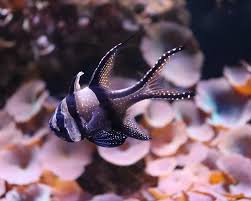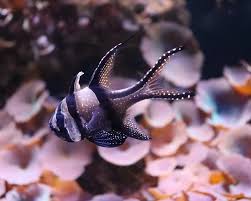Dragons have long been a central figure in mythology across many cultures, often appearing alongside celestial beings like angels and terrifying creatures like monsters. In Chinese mythology, dragons are seen as divine, wise, and powerful beings, often connected to the cosmic balance of yin and yang. In contrast, in Western mythology, dragons are frequently associated with chaos, destruction, and challenges that heroes must overcome.
One of the most fascinating aspects of dragon lore is their connection to angels and monsters in various legends. Stories from different traditions depict dragons as divine messengers, guardians, or even challengers to celestial forces. They sometimes aid heavenly beings, but at other times, they stand as rivals to gods, angels, or other supernatural entities.
This article will delve into the role of dragons in legends about the appearance of angels and monsters, examining their symbolic meanings, famous myths, and how they continue to inspire modern storytelling.
1. The Role of Dragons in Angelic Myths
A. Dragons as Celestial Guardians
In some traditions, dragons are not seen as mere beasts but as divine protectors working alongside celestial beings. These dragons often:
- Guard sacred places, preventing mortals or evil beings from entering.
- Serve as intermediaries between the heavens and the earth.
- Carry divine wisdom, assisting gods or angels in guiding humanity.
In Chinese mythology, dragons are associated with heavenly forces and are seen as bringers of balance. The Celestial Dragon (天龙 – Tiān Lóng) is believed to:
- Guard the heavens and celestial palaces.
- Assist heavenly beings in maintaining order.
- Protect sacred texts and knowledge from corruption.
Similarly, in European medieval legends, some dragons are depicted as guardians of holy relics, only allowing the pure-hearted to pass their trials.
B. Dragons as Messengers of the Gods
In some traditions, dragons function as divine messengers, carrying out the will of angels or higher beings. In Japanese and Hindu mythology, dragon-like beings such as the Nāga are believed to:
- Deliver messages from the heavens to kings and sages.
- Control weather and cosmic forces under divine command.
- Assist in maintaining the natural balance between heaven and earth.
These dragons are often worshiped in temples, with priests acting as their earthly representatives.
C. The Battle Between Dragons and Angels
While some myths portray dragons as divine allies, others depict them as adversaries of celestial beings. In Christian and Islamic traditions, dragons are sometimes seen as symbols of chaos and defiance against divine order.
- The Book of Revelation describes a great red dragon (often linked to Satan) battling against Archangel Michael and his angels.
- In Islamic folklore, a giant serpent-like dragon, Dahhak, is believed to represent evil and corruption, destined to be defeated by divine warriors.
- In European Christian traditions, knights and saints often slay dragons to prove their faith and divine mission, symbolizing the triumph of good over evil.
These myths reinforce the idea that dragons can represent forces that either uphold or challenge celestial order, making them complex figures in spiritual lore.
2. Dragons in Legends of Monsters and Chaos
A. Dragons as Ancient Beasts of Destruction
Unlike their role as celestial beings, dragons are often portrayed as monstrous entities that bring destruction. Some cultures depict dragons as primordial creatures that existed before gods and humans, embodying chaos and raw power.
- In Chinese creation myths, dragons were said to have shaped rivers and mountains, sometimes clashing with gods and legendary heroes.
- The Babylonian myth of Tiamat portrays a dragon-like monster who is defeated by the god Marduk, symbolizing the triumph of civilization over chaos.
- The Norse myth of Jörmungandr, the World Serpent, depicts a dragon-like creature that will rise at Ragnarök to bring destruction.
These myths establish dragons as monsters that heroes must overcome to restore balance to the world.
B. The Dragon as a Hybrid Between Angel and Monster
In some legends, dragons are depicted as beings that exist between good and evil, embodying both divine wisdom and destructive power. This duality makes them neither fully celestial nor entirely monstrous.
- In Chinese Daoist thought, the dragon represents the dual forces of yin and yang, meaning it can bring both blessings and storms.
- In Slavic mythology, the Zmey is a three-headed dragon that can be both a protector of the land or a chaotic force, depending on how it is treated by humans.
- In Japanese mythology, the Ryū are powerful dragon spirits that can punish the wicked but also bless the virtuous with gifts.
This dual nature of dragons adds to their mystery, making them some of the most complex figures in mythology.
3. Legendary Battles Between Dragons, Angels, and Monsters
A. The Battle Between St. George and the Dragon
One of the most famous dragon myths is the story of St. George and the Dragon, where a knight, representing divine justice, slays a terrible dragon that terrorizes a kingdom. The legend symbolizes:
- The victory of good over evil.
- The role of divine intervention in human struggles.
- The idea that monsters can be overcome by faith and courage.
This story has influenced countless myths and medieval tales, where dragons serve as the ultimate challenge for heroes.
B. The Clash Between Archangels and the Dragon of Chaos
In Christian apocalyptic myths, dragons are often seen as forces of ultimate destruction, requiring divine intervention.
- Archangel Michael is said to lead heavenly armies against the dragon, symbolizing the final battle between order and chaos.
- In some Gnostic texts, dragons represent hidden knowledge, which angels must either protect or destroy.
This theme of dragons clashing with celestial beings appears in multiple cultures, reinforcing their status as primeval forces beyond human control.
C. The Dragon as a Creator and Destroyer in Hindu and Buddhist Myths
In Hindu and Buddhist traditions, dragons (or Nāga) are seen as both divine and monstrous. Some stories tell of:
- Nāga kings who grant wisdom to saints, helping them achieve enlightenment.
- Nāga demons who try to deceive monks, acting as tricksters or obstacles on the path to spiritual growth.
- The great Nāga Ananta, who supports the universe and maintains cosmic balance.
These stories emphasize that dragons are not simply monsters but complex beings with both destructive and enlightening aspects.
4. Dragons in Modern Mythology and Fantasy
A. Dragons as Ancient Guardians
Modern fantasy often portrays dragons as wise, ancient beings that can be either helpful or dangerous, echoing their mythological roots.
- In J.R.R. Tolkien’s “The Hobbit”, Smaug is a terrifying dragon who hoards treasure but also represents the consequences of greed.
- In “Game of Thrones”, dragons symbolize power, destruction, and rebirth.
- In anime and video games, dragons are often portrayed as god-like entities, influencing the fate of heroes.
B. The Return of the Angelic and Monstrous Dragon Archetype
In modern media, dragons are sometimes depicted as celestial beings, while others return to their role as chaotic monsters.
- The “Final Fantasy” series features dragons that are either sacred beings or terrifying enemies.
- In comic books and movies, dragons often represent hidden power, divine intervention, or apocalyptic destruction.
This continued evolution shows that dragons remain a timeless symbol of power, wisdom, and mystery.
Conclusion
Dragons, angels, and monsters have long been intertwined in mythology, each representing different aspects of power, wisdom, and destruction. Whether as celestial guardians, monstrous beasts, or divine messengers, dragons continue to captivate the imagination, shaping both ancient legends and modern fantasy.











